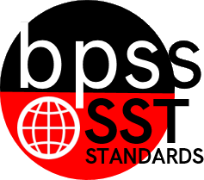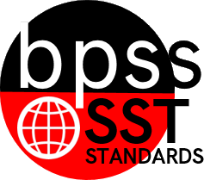4th Grade Social Studies (Archived)
 BPS District Social Studies Standards Book
BPS District Social Studies Standards Book
SST-04 "I can ... statements"
1st Grade Social Studies
2nd Grade Social Studies
4th Grade Social Studies
5th Grade Social Studies
7th Grade Social Studies
8th Grade Social Studies
S |
|---|
SST-04.1.01
Student Learning Targets:Knowledge Targets
Reasoning Targets
Skills (Performance) Targets
Product Targets
Proficiency Rubric
ResourcesWebsites Helping Your Child With Social Studies Social Studies Alive Resources
Vocabulary
| ||||||||||||||||||||||||||||||||||||||||
SST-04.1.02
Student Learning Targets:Knowledge Targets
Reasoning Targets
Skills (Performance) Targets
Product Targets
Proficiency Scale
ResourcesWebsites Vocabulary | ||||||||||||||||||||||||||||||||||||||||||||
SST-04.1.03
Student Learning Targets:Knowledge Targets
Reasoning Targets
Skills (Performance) Targets
Product Targets
Proficiency Rubric
ResourcesWebsites Helping Your Child With Social Studies Social Studies Alive Resources
Vocabulary
| ||||||||||||||||||||||||||||||||||||||||
SST-04.1.04
Student Learning Targets:Knowledge Targets
Reasoning Targets
Proficiency Rubric
ResourcesWebsites Helping Your Child With Social Studies Social Studies Alive Resources
Vocabulary
| ||||||||||||||||||||||||||||||||||||||||
SST-04.1.05
Student Learning Targets:Knowledge Targets
Reasoning Targets
Skills (Performance) Targets
Product Targets
Proficiency Scale
ResourcesWebsites Vocabulary | ||||||||||||||||||||||||||||||||||||||||||||
SST-04.2
Narrative for the Important Historical EventsFourth grade students apply their growing academic skills and knowledge to an exploration of North Dakota and its relationships with regional, national, and world communities. Students are beginning to develop a more refined concept of time and can begin to deal with cause-and-effect relationships and decision-making processes, such as identifying problems and considering alternative solutions and their subsequent consequences. Students trace the historical periods, places, people, events, and movements that have led to the development of North Dakota as a state. Calculation Method for StandardsStandards are larger groups of related benchmarks. The Standard Grade is a calculation of all the related benchmarks. Click on the benchmark name below each Standard to access the learning targets and proficiency rubrics for each standard's related benchmarks. | |
SST-04.2.01
Student Learning Targets:Knowledge Targets
Reasoning Targets
Skills (Performance) Targets
Product Targets
Proficiency Scale
ResourcesWebsites Vocabulary | ||||||||||||||||||||||||||||||||||||||||||||
SST-04.2.02
Student Learning Targets:Knowledge Targets
Reasoning Targets
Skills (Performance) Targets
Product Targets
Proficiency Scale
ResourcesWebsites Vocabulary | ||||||||||||||||||||||||||||||||||||||||||||
SST-04.2.03
Student Learning Targets:Knowledge Targets
Reasoning Targets
Skills (Performance) Targets
Product Targets
Proficiency Scale
ResourcesWebsites Vocabulary | ||||||||||||||||||||||||||||||||||||||||||||
SST-04.2.04
Student Learning Targets:Knowledge Targets
Reasoning Targets
Skills (Performance) Targets
Product Targets
Proficiency Scale
ResourcesWebsites Vocabulary | ||||||||||||||||||||||||||||||||||||||||||||
SST-04.2.05
Student Learning Targets:Knowledge Targets
Reasoning Targets
Skills (Performance) Targets
Product Targets
Proficiency Scale
ResourcesWebsites Vocabulary | ||||||||||||||||||||||||||||||||||||||||||||


 Standard 1:
Standard 1: